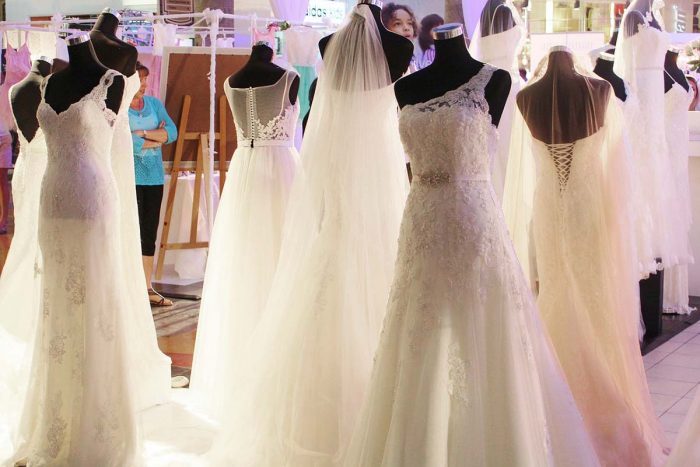A wedding is widely considered one of the most important – and exciting – days of a woman’s life; however, amongst the chaos of organising the big day, it can be easy to overlook the finer details.
We tend to construct the bigger picture instead, such as the guest list, venue or church; however, whether formal or relaxed, classic or contemporary, your wedding dress can be the focal point of the style of the day.
It can be easy to become overwhelmed, but with a few quick steps and extra research, you can take control.
There are countless beautiful wedding dress designs featured on fashion and wedding websites. By knowing your fabrics, you can select a dress that flatters your body type and reflects your style.
Charmeuse
This is fabric we might regularly refer to as satin, but charmeuse is even more delicate in texture. It has a sleek finish and lustrous shine, but is vulnerable to stains and snags.
Damask and brocade
These two opulent fabrics are similar in style but differ slightly in structure. Brocade is often referred to as the jacquard print and features raised designs on a smooth material, usually in the same shade. Damask achieves the same appearance but in a lighter fabric; as a result, brocade is usually a luxurious autumn or winter choice, whereas damask is a youthful, lighter alternative. They are particularly popular for more formal, elegant weddings with a classic aesthetic.
Organza
A material synonymous with both brides and ballet, this naturally feminine material gathers well and offers stiff support without heaviness. It is used not only for the creation of tutus and haute couture showpieces, such as those seen at London Central Saint Martins, but also features in billowing gowns required to hold their shape. The material can be cumbersome if not used sparingly, but the effect is breathtaking.
Duchesse satin
This stiffer form of the familiar satin fabric has the same inviting sheen but holds its shape more effectively. It is a popular choice for skirts, as it tends not to wrinkle heavily with movement and can be tailored to sit away from the body. This creates an ethereal, gliding motion as the wearer moves and is therefore a popular choice for walking down the aisle.

